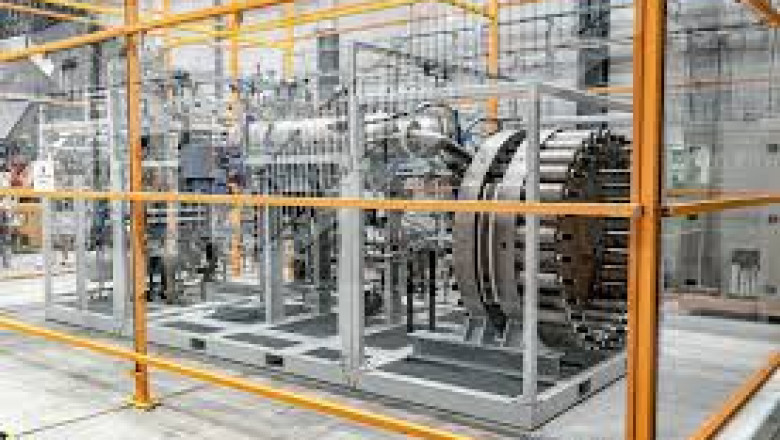views
The hydrogen electrolyzer market has experienced significant momentum in recent years due to the rising demand for green energy solutions. Electrolyzers are devices that split water molecules into hydrogen and oxygen through an electrochemical process, with hydrogen being an essential component for industries such as energy, transportation, and manufacturing. The global shift toward sustainability, combined with increasing efforts to reduce carbon emissions, is catalyzing the growth of the hydrogen electrolyzer market.
Market Growth Drivers
The main drivers of the hydrogen electrolyzer market’s expansion include government support for clean energy technologies, falling electrolyzer costs, and growing environmental awareness. Various countries have set ambitious targets for carbon neutrality, making hydrogen an attractive solution for decarbonizing industries such as steel production, cement, and chemicals. Electrolyzers help produce green hydrogen when powered by renewable energy sources like wind and solar, which aligns with international climate goals.
Additionally, global investments in green hydrogen projects are accelerating. Hydrogen as a clean fuel has potential applications in sectors like heavy transportation (trucks, trains, ships) and energy storage, providing an avenue for growth for electrolyzer manufacturers. Another catalyst for this market is the improvement of electrolyzer technologies, such as Proton Exchange Membrane (PEM) and Alkaline Electrolyzers, which have become more efficient and cost-effective.
Key Challenges in the Hydrogen Electrolyzer Market
While the hydrogen electrolyzer market presents immense opportunities, it also faces several challenges. One of the primary obstacles is the high capital cost of electrolyzer installations. Despite advancements in technology and cost reductions, hydrogen electrolyzers are still relatively expensive to deploy at scale, especially compared to conventional energy production methods. This may delay large-scale adoption, particularly in developing economies where renewable energy infrastructure is still emerging.
Another challenge is the need for infrastructure development. While electrolyzers are essential for producing green hydrogen, the infrastructure required to distribute and store hydrogen at scale is currently underdeveloped. To facilitate the growth of the hydrogen economy, substantial investments in hydrogen storage and transportation networks are required. Furthermore, a global standard for hydrogen production, distribution, and storage needs to be established to ensure consistency and efficiency across markets.
Technological Innovations and Advancements
Technological innovations are expected to drive the growth of the hydrogen electrolyzer market. For instance, solid oxide electrolyzers (SOE) are emerging as a promising alternative to conventional electrolyzers due to their higher efficiency rates. These advancements aim to enhance the performance of electrolyzers, reduce costs, and increase the scalability of hydrogen production.
The development of advanced materials for electrolyzer electrodes is also playing a significant role in improving electrolyzer efficiency. Research into cost-effective catalysts is helping reduce reliance on expensive materials like platinum, which is traditionally used in PEM electrolyzers. These innovations aim to lower the overall cost of green hydrogen production, making it more accessible for industries and consumers alike.
Geographical Analysis
Geographically, the hydrogen electrolyzer market is witnessing rapid growth in Europe, North America, and Asia Pacific. Europe is at the forefront of the hydrogen economy, with countries like Germany, the Netherlands, and France investing heavily in hydrogen infrastructure and technology. The European Union's hydrogen strategy aims to create a competitive hydrogen market by 2050, which is likely to drive demand for electrolyzers in the region.
In North America, the United States is focused on developing a clean hydrogen economy, as outlined in the Hydrogen Strategy for America. Similarly, the Asia Pacific region is seeing investments in hydrogen projects from countries such as Japan and South Korea, both of which have ambitious hydrogen plans. These regions are likely to contribute significantly to the growth of the hydrogen electrolyzer market in the coming years.
Future Outlook
The future of the hydrogen electrolyzer market looks promising. As countries ramp up their efforts to meet net-zero targets, hydrogen will play a pivotal role in achieving decarbonization goals. The growing adoption of renewable energy technologies, combined with ongoing technological advancements, is expected to result in a decrease in electrolyzer costs and an increase in market competitiveness.
Hydrogen electrolyzers will not only facilitate the production of green hydrogen but will also serve as key enablers of energy storage solutions, addressing intermittency issues in renewable energy generation. The development of efficient, cost-effective, and scalable electrolyzers will continue to drive the market, paving the way for a more sustainable and low-carbon future.






















Comments
0 comment